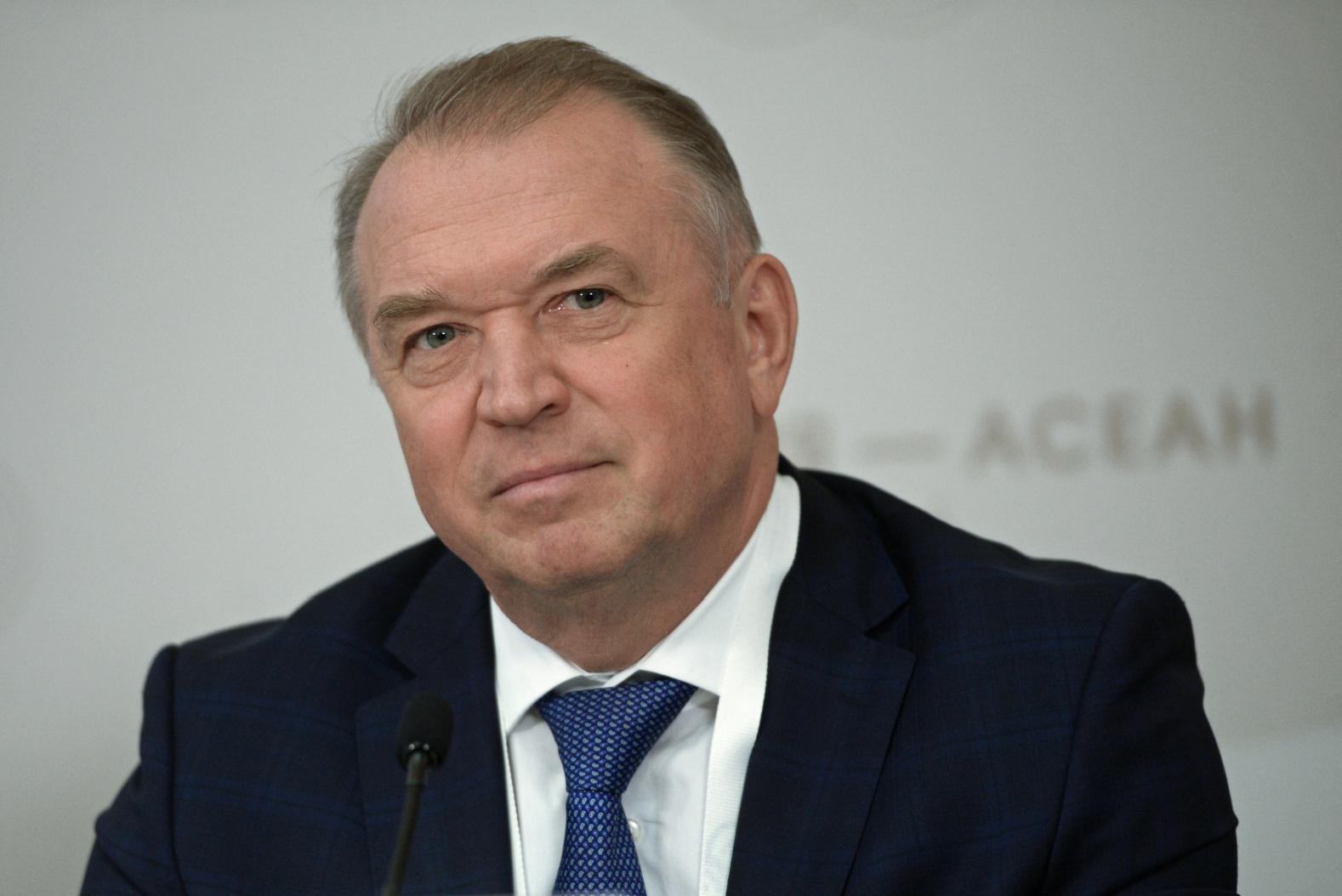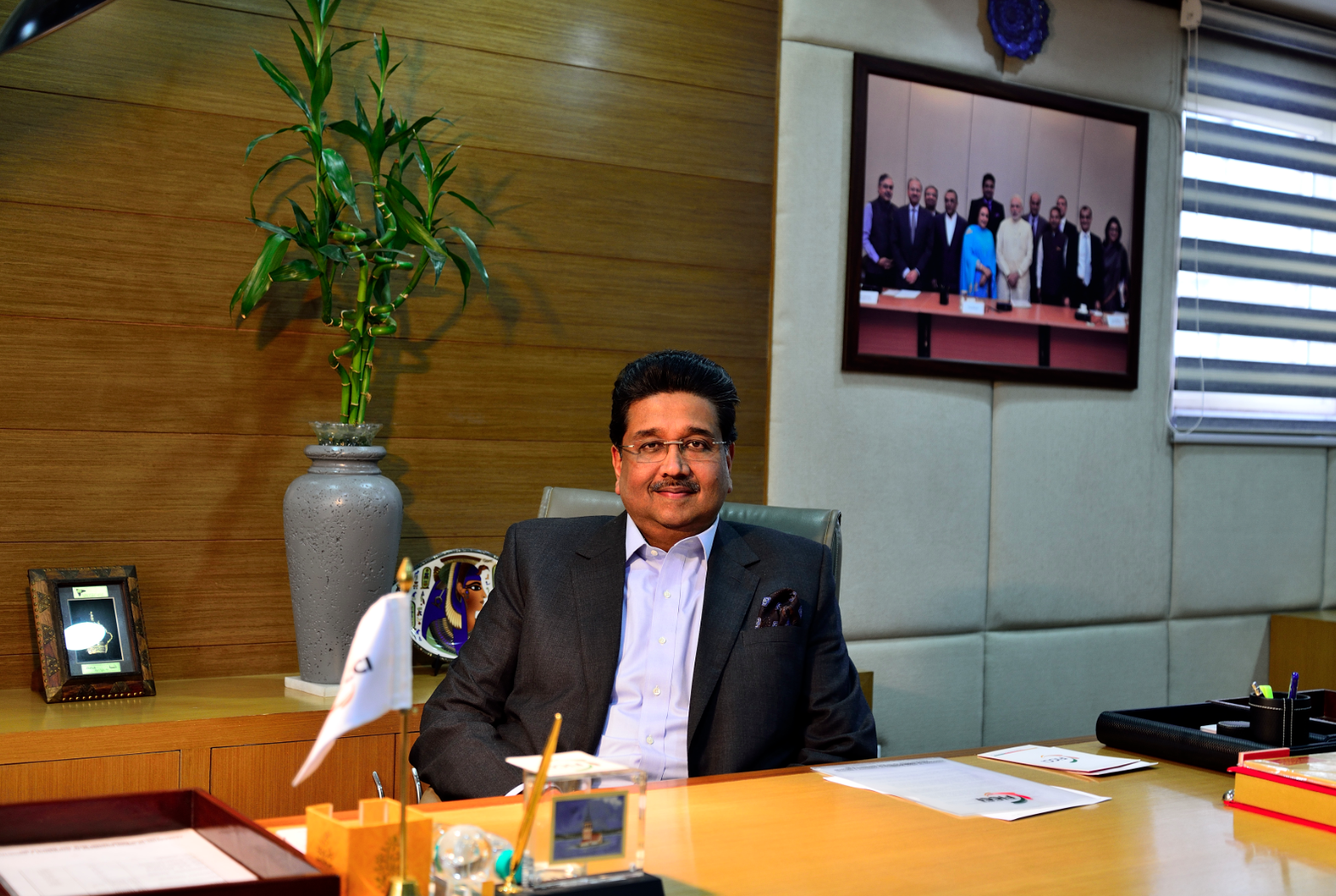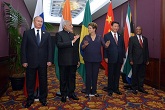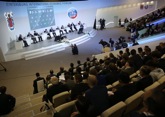Business ready to diversify cooperation in BRICS: Katyrin

Sergey Katyrin, president of the Russian Chamber of Commerce and Industry (RFCCI).
Pavel Lisitsyn/RIA NovostiThe first Trade Fair of BRICS countries will be held from 12 to 14 October in New Delhi. What is the scale of Russia’s participation in the Fair?
SG: The first BRICS Trade Fair is an initiative of the Indian party. The Prime Minister of India, Narendra Modi announced his intention to conduct a large-scale joint event for the first time at the BRICS summit in Ufa last year. The main purpose of the event is to create conditions for the BRICS entrepreneurs to present their products, establish business contacts and find business partners.
Carrying out activities of this magnitude, with extensive international participation (in addition to the BRICS countries, the business events will be attended by business representatives from Bangladesh, Bhutan, Myanmar, Nepal, Sri Lanka and Thailand), certainly opens up new opportunities to attract investment and technologies, as well as the development of trade-economic and business ties.
The Russian exposition is based on the regional branch principle. The exhibition will present the investment potential of Russian regions and the most promising projects in our regions.
Participation in the exhibition has already been confirmed about 30 Russian companies, including large industrial enterprises, representatives of SMEs, business associations, including the regions of Russia.
How does BRICS fare in Russian business and trade at the moment? How has the "weight" of BRICS in the Russian trade changed in the last year?
BRICS partners are attracting increasing attention from Russian businesses as promising markets for investment and trade cooperation in infrastructure development, agriculture, industry and other sectors.
In the current economic conditions, the BRICS have additional opportunities to gain a foothold in the Russian market and substantially increase trade with our country.
Business is ready to diversify cooperation and establish universal mechanisms of interaction, which will open new prospects for companies interested in trade with the BRICS, so the number of joint projects between the two countries can gradually increase.
The share of BRICS countries in Russia's foreign trade turnover is growing progressively and steadily (according to customs statistics, in 2015 the share of BRICS countries accounted for 14.7%, while in the first quarter of 2016, it was 16.3%).
Despite the difficult situation in which the Russian economy is, we have all the tools to not only restore the volume of our exports to the BRICS countries, but also to increase it, and change its structure in qualitative terms.
It is gratifying to note that the share of export is gradually increasing in the BRICS countries with the high added value of Russian products. The cooperation in services, especially in the field of information and computer technologies, has expanded.
The Russian Chamber of Commerce, together with its partners from BRICS countries, realises the importance of regular business contacts, exchange of business and economic information. It is about export opportunities and import needs of the parties, investment opportunities, tenders held, relevant information on development of key sectors of the economy of BRICS countries.
What are the key challenges the business is currently facing in the framework of the cooperation within the BRICS?
Our main goal as the BRICS Business Council is to develop cooperation between the business communities of our countries and the promotion of a favourable business environment.
Cooperation among BRICS members takes place on several fronts at once, including in the field of industry, energy, agriculture and high technology. Cooperation in the oil and gas sector and aerospace sectors is also developing especially effectively.
Our partners have practical experience in the field of transport infrastructure and energy, which can effectively be implemented in a multilateral format. We are now working to design such initiatives.
Among the priorities of developing cooperation with the New Development Bank (NDB) of the BRICS is facilitating the optimization of trade regimes, internal standards, harmonization of technical regulations, removal of administrative barriers (including visas); support inter-business relations; expansion of information exchange and cooperation in the field of exhibition and trade fair activities.
The BRICS counties are often blamed for the fact that they reluctantly move from declarative to practical work. Did this situation change during Russia's presidency?
The year of Russia's chairmanship of the BRICS was a breakthrough in all respects, including the Business Council. We were able to gather the largest exhibition organizers for BRICS countries in Moscow. Now we are working to coordinate the exhibition calendars and business expansion plans the BRICS in the most important exhibitions in these countries.
Holding the SPIEF BRICS Business Forum has become a good tradition as it has allowed us to synchronize our clocks with foreign partners and designate both the main priorities for our work and the challenges which we face.
The regions are actively getting involved with our work. During Russia’s Presidency, much attention was paid to the development of cooperation with BRICS on a regional level. Events in Ufa, Khanty-Mansiysk, Rostov-on-Don have been held at a high quality level.
The selection of Ufa as the venue for the BRICS summit, business meetings held there in July, the first forum of regional small and medium SCO and BRICS businesses held in Ufa in October; all these activities not only strengthened and consolidated the interest in inter-regional cooperation, but also identified significant prospects for regional business.
The BRICS countries have set up a joint bank and a fund. What tools are still required for the group to develop more dynamically?
Multilateral cooperation among the BRICS countries includes several dozens of forms of dialogue, which cover key areas of cooperation. There is a steady trend towards an increase in the number of interaction formats.
The BRICS bank is aimed, first and foremost, at financing joint projects that will bring real benefits to the participating countries’ economies. The Bank has already started to finance projects, including those in national currencies, and this is very important for business. The first loans have been issued.
The BRICS Business Council was established in 2013. It is unique as a format of interaction, because it has the ability to approach the governments of BRICS directly. Proposals and initiatives of the Business Council which, though a non-governmental organization outside government jurisdiction, directly brings major business players together and directly involves those directly involved in raising trade relations.
We must now focus on the effective operation of existing formats of cooperation. Special attention should be paid to the formats, the proposed concrete initiatives, implementation of which would help to increase trade between the BRICS, and align multilateral investment schemes and industrial cooperation.
At what stage is the project on the convergence of economic systems of five countries: harmonization of standards, removal of administrative barriers, simplification of visa regimes?
As I have already said, the removal of a number of administrative barriers is a necessary condition for trade and investment cooperation to enter a new level.
We in the Business Council pay special attention to the elaboration and analysis of the existing administrative barriers. In 2015, at the initiative of the Russian Business Council, a separate working group was set up to specifically address these issues.
The Working Group has prepared the materials, taking into account positions of all the national units for technical regulation, customs administration, financial and corporate regulation, visa and migration policy, e-commerce and standardization. The barriers that impede trade between the BRICS countries, and recommendations to address these barriers have been identified in all of these issues. We will present the list of such barriers, industry-wise, and suggestions on how to eliminate them at the upcoming BRICS Summit in India.
Will the CCI participate in the creation of Russian Trading House in India? Will there be similar institutions created in other BRICS countries?
In modern conditions, the task of moving goods to overseas markets is often more complicated than making the product. The way we see it is that our cooperation in the framework of the Agreement signed at SPIEF 2016 with the Russian export centre (REC) as the coordinator of the overall system of state support for export should create a powerful synergy in this area.
It is important to emphasize that the REC actively uses the possibilities of representation of the CCI, as well as the Trade Mission to India, to search for foreign contractors who are interested in non-raw material imports from Russia.
I am convinced that the work of the Russian Trading House in India will be an essential tool in implementation of practical measures to support Russian exports.
What is hindering the development of the Russian-Indian trade at the moment? Is Russian business ready for the discovery of "green" corridor with India?
First of all, I would like to note the objective factors that complicate the growth of mutual trade. This is geographical distance, the weakness of transport communications, problems with mutual settlements with India, trade structure, subjected to market fluctuations, increased competition from the Asian countries, the constant presence of the US and European companies on the market, as well as stringent phyto-sanitary controls on imports of goods into the Russian Federation.
In addition, negative factors such as the relatively high cost of credit, and limited availability of energy insecurity in India, shortage of skilled labour and a number of other factors, including those caused by the regulation of the land and labour relations, and tax law.
Taking these circumstances into account, it is currently advisable to talk about a two-way street rather than a "green corridor". I would like to mention the large-scale economic reforms implemented by the Government of India which could solve a number of infrastructure problems and abolish a substantial part of the administrative barriers to foreign trade.
How realistic is the goal to increase trade by 2025 to $ 30 billion? Which projects or industries will be involved here?
We have the tools to ensure growth of mutual trade, including those in nuclear energy. With Russia’s assistance, the construction of NPP Kudankulam is progressing in the state of Tamil Nadu. On September 12, 2016 an agreement on the construction of the fifth and sixth unit was prepared. It is scheduled to be signed in autumn. The issue of the allocation of a second site for Russian nuclear power plants is being decided. We are planning to build up to 25 nuclear reactors in India with Russia’s participation.
Our cooperation in the oil and gas sector continues. This partnership is strategic. PJSC Rosneft has signed a number of agreements for the sale of stakes in mining projects in Eastern Siberia with Indian companies, and gained access to the Indian market. The Russian state-owned company is in the final phase of negotiations for the purchase of 49% of India's Essar Oil. The transaction is scheduled to be completed in October 2016.
In the field of petrochemicals, I would like to note the cooperation of JSC SIBUR Holding and the Indian company Reliance Industries Ltd in the production of butyl rubber. The construction of a plant in Jamnagar (Gujarat state) is currently underway. The enterprise is scheduled to be launched in 2018. Uralkali and an importer of mineral fertilizers, Indian Potash Ltd., have concluded another contract for the delivery of 650,000 tons of potash to India in August 2016.
The partnership for trade in rough diamonds has received a new impetus. Under the new contract period (2015-2017), PJSC ALROSA has increased the number of long-term contracts for the supply of natural diamonds with Indian companies from 9 to 12.
Our cooperation in metallurgy is moving forward. PJSC Uralmash shipped equipment to India to modernize sinter plants number 1 and 2 of the Vizakhapatnam metallurgical plant in early 2016.
It is significant that the representatives of big business are coming into India from Russia and vice versa. If we want to increase the turnover in 2025 to 30 billion US dollars, we need to activate economic contacts between representatives of small and medium-sized businesses who are willing to promote bilateral co-operation projects. We want to give the innovative sector a new impetus too.
Today India holds about 18.5% of the global market in ICT, but it has a very weak presence in Russia. The establishment of credit in local currencies seems promising.
All rights reserved by Rossiyskaya Gazeta.
Subscribe
to our newsletter!
Get the week's best stories straight to your inbox




